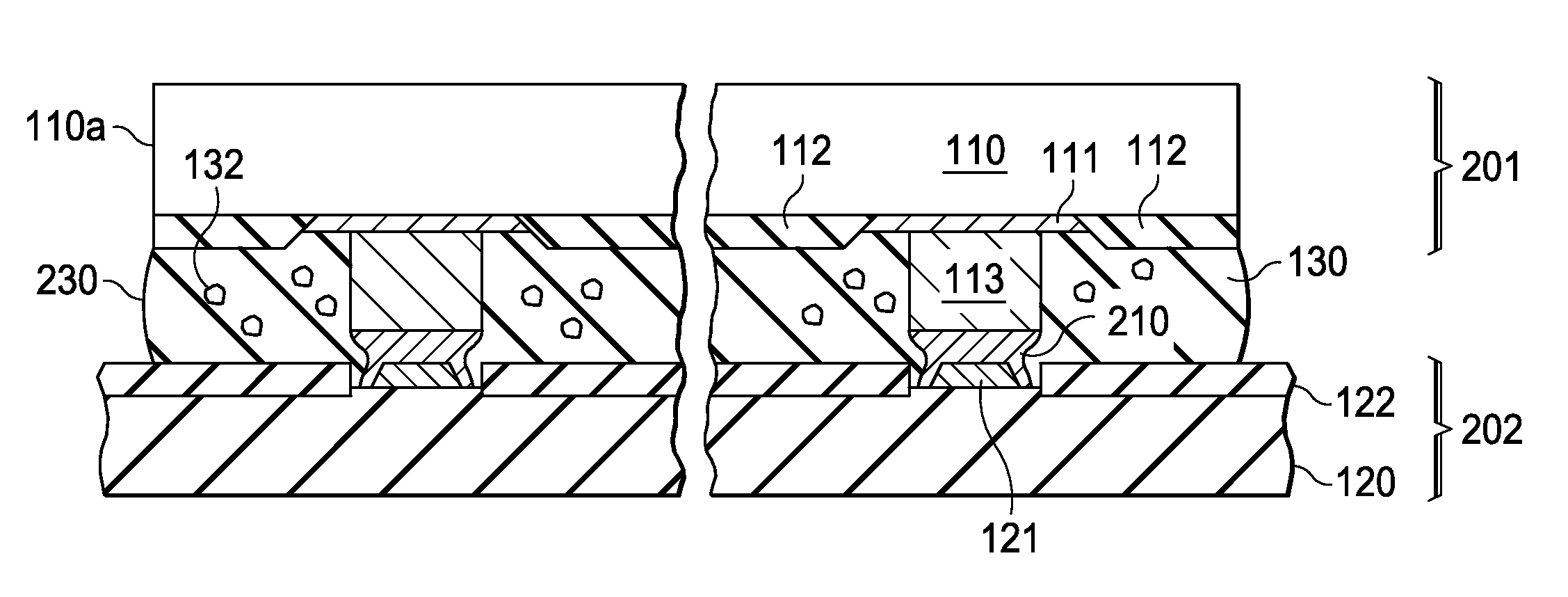Method for fine-pitch, low stress flip-chip interconnect
a flip-chip and interconnection technology, applied in the direction of adhesive types, solid-state devices, semiconductor devices, etc., can solve the problem that the pre-attach method is often used to make to-pad contacts with solderability problems
- Summary
- Abstract
- Description
- Claims
- Application Information
AI Technical Summary
Benefits of technology
Problems solved by technology
Method used
Image
Examples
Embodiment Construction
[0017]In FIG. 1, a first body 101 and a second body 102 are shown. First body 101 includes a base material 110, which by way of example is a semiconductor chip made of silicon, and at least one metallic terminal 111. As examples, terminals 111 are made of an aluminum alloy, copper, or a copper alloy. Terminals 111 are surrounded by a layer of insulating material 112, for instance a solder mask. Affixed to each terminal 111 is a first metallic member 113 made of a non-reflow metal or alloy, which is capped by a layer of reflow metal or alloy. In FIG. 1, first member 113 is shaped as a column or pillar with one end attached to terminals 111 and the opposite end having reflow metal 114. Pillar-shaped members 113 are frequently referred to as bumps or studs. The reflow metal 114 is exemplarily shaped as a half-dome because it has undergone one reflow process; reflow metal 114 represents the contact area of first member 113. (With gold to gold contacts, reflow metal may not be necessary)...
PUM
| Property | Measurement | Unit |
|---|---|---|
| height | aaaaa | aaaaa |
| diameter | aaaaa | aaaaa |
| diameter | aaaaa | aaaaa |
Abstract
Description
Claims
Application Information
 Login to View More
Login to View More - R&D
- Intellectual Property
- Life Sciences
- Materials
- Tech Scout
- Unparalleled Data Quality
- Higher Quality Content
- 60% Fewer Hallucinations
Browse by: Latest US Patents, China's latest patents, Technical Efficacy Thesaurus, Application Domain, Technology Topic, Popular Technical Reports.
© 2025 PatSnap. All rights reserved.Legal|Privacy policy|Modern Slavery Act Transparency Statement|Sitemap|About US| Contact US: help@patsnap.com


